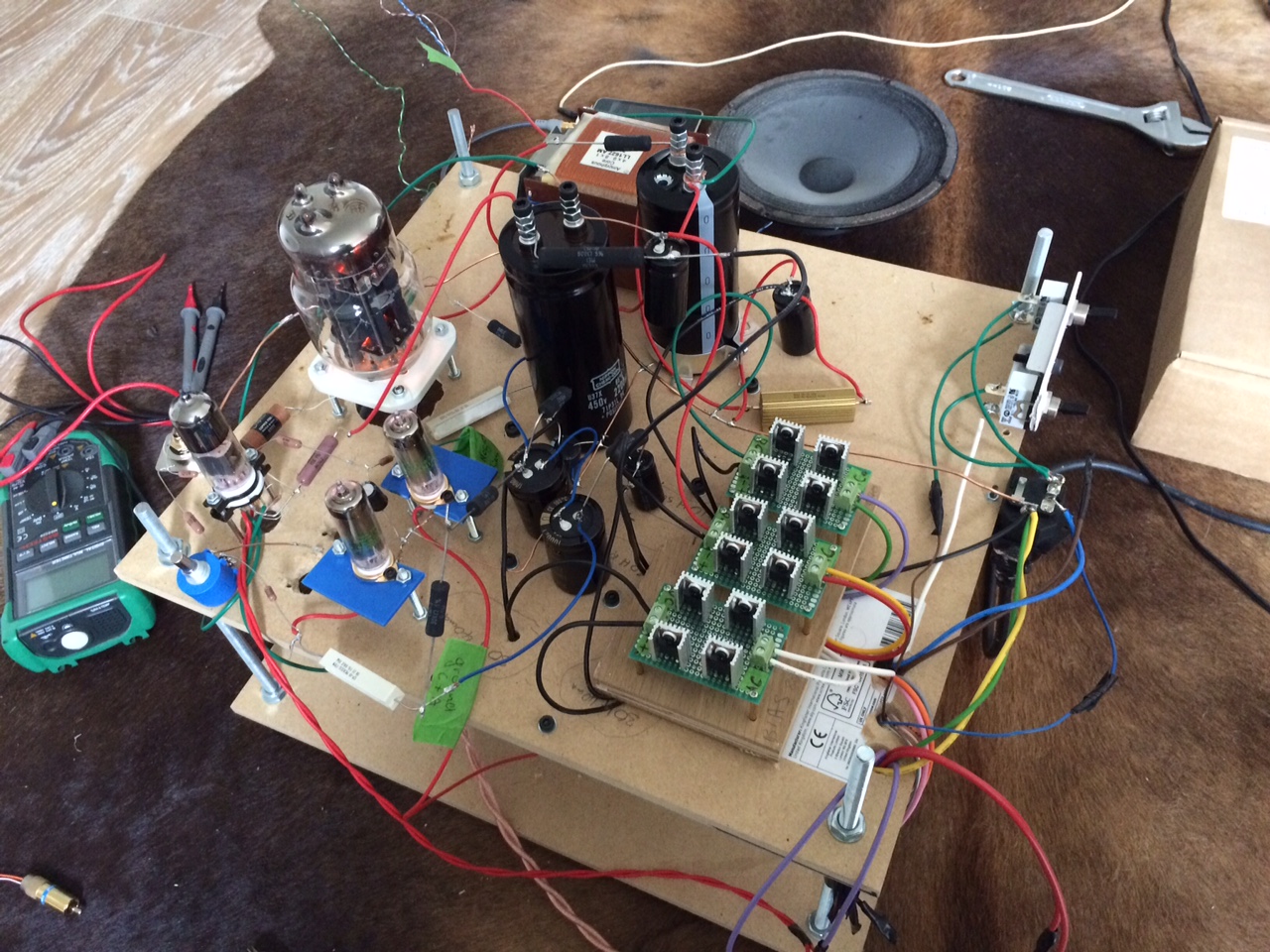|
Hi Romy
I have built a Melq prototype and need some help with the bias.
This is my first tube amp build so my understanding is not great.
All parts values were used as per the 4.4 schematics. Rectifier bridges were built with Infineon SDT12S60 diodes. I was getting slightly less voltage on DC side however I’ve ordered my power transformers with multiple primary taps so I was able to adjust it.
My gas valves stabilise at 146.1v and 145.6v.
When I set 0v dc at the input via VR1 I get - 4.3v on the driver grid. The B+ on the first tube is 189v.
Should the grid bias voltage change when I adjust VR1? In my case it does – if I keep increasing dc on inputs I can get to -1.5v on the grid and around 60v on B+.
Everything seems ok but when I check the V1 voltage at B (146.1v) on the positive bias line the dc on the input suddenly jumps to ~0.47v, the grid voltage drops to -3.5v and B+ goes down to 160v. Now if I test the negative bias voltage at C everything goes back to how it was before.
The other thing is that when I switch the bias power off the dc on the inputs goes up to +20v.
The DC on the inputs also drifts ~+-50mV.
Is there any difference which side legs you connect the VR1? I connected mine so I get 0 to 20k. If I was to connect it the other way round then I will get 0-5k-0.
Where should I take the measurement for the V1 current draw? Do I connect my multimeter in series between R11 leg and tube anode?
The amp is very quiet when I test it with my old ipod however if I connect it to my preamp or dac it’s noisy so I need to double check my grounding probably.
The output stage seems fine. I get ~202v/ ~195ma. ~-78v on bias. I use Lundahl ll1627 amorphous transformers wired in D. My fane 8m is 8r and s2 16r.
I tested the amp with midrange and upper bass and it sounded very promising. It’s very fast and harmonically rich.
In your correction thread you recommend: 12) Put two 10R, 5W resistors (in each leg) between the rectification bridges and secondary of the power transformers. Is this necessary with my bridges ? I haven't added them yet.
Thanks!

.JPG)
|